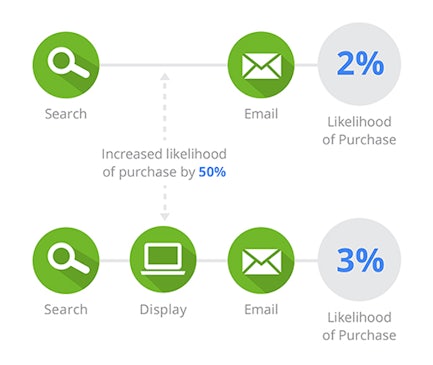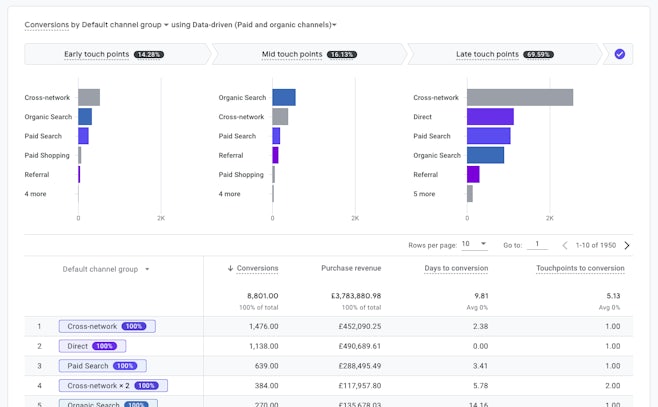As we all adapt to using Google Analytics 4, one of the most important changes marketers are facing is the change to data-driven attribution. With Universal Analytics, all conversions were attributed to the last non-direct channel.
Whilst this model awarded the conversion to the channel that ultimately led to the conversion, it didn’t show the full multi-channel picture and how other channels contributed. Whilst we had assisted conversion reports and ‘Attribution Projects’ these features never felt complete or were always one of Google’s ‘Beta’ features.
How data-driven attribution works
In a nutshell, Data-driven attribution uses machine learning algorithms to analyse historical data and determine the impact of different channels, campaigns, and interactions on conversions.
Collection of user journey data
Without data, you don’t have data-driven attribution, GA4 therefore collects data from various touchpoints along the user journey, including different marketing channels such as organic search, paid search, social media, email campaigns etc. It also tracks user interactions within your website or app such as page views, clicks, and most importantly, the conversion actions that you define.
Attribution modelling and weighted credit distribution
This is where the magic happens! Using advanced machine learning techniques, the attribution model assigns a specific weight to each touchpoint based on its influence. It considers factors like the position of the touchpoint in the user journey, the frequency of touchpoints and their relative importance in driving conversions. Touchpoints that have a high impact on conversions receive a higher credit weight.

Reporting insights
GA4 provides visual reports and insights that allow you to analyse the attributed credit for each touch point. You can explore the data-driven attribution reports to understand the role of different channels, campaigns, and interactions in your customers’ journey, helping you make data-backed decisions for your marketing strategies.

It’s important to note that data-driven attribution relies on historical data and it requires a sufficient volume of data to provide accurate and reliable insights. The model continuously learns and adapts as new data becomes available allowing it to refine attribution over time.
Other considerations
Whilst this blog has focused on how the principles of data-driven attribution within GA4 and how it’s applied to your standard conversion reports, the technology is fundamental to various other advanced tracking features within GA4 and beyond. For example, if you are using Google’s ‘consent mode’ in your tagging deployment, GA4 collects observable and unobservable data (Declined cookie users) and applies similar machine-learning techniques and data-driven analysis to recover conversions that would otherwise be lost.
Final thoughts
Data-driven attribution is here to stay, and whilst it might be a little confusing to understand at first, you can be confident that it will provide a greater understanding of our marketing efforts as a whole, enabling you to make informed decisions about resource allocation, campaign optimization, and overall marketing strategy.



